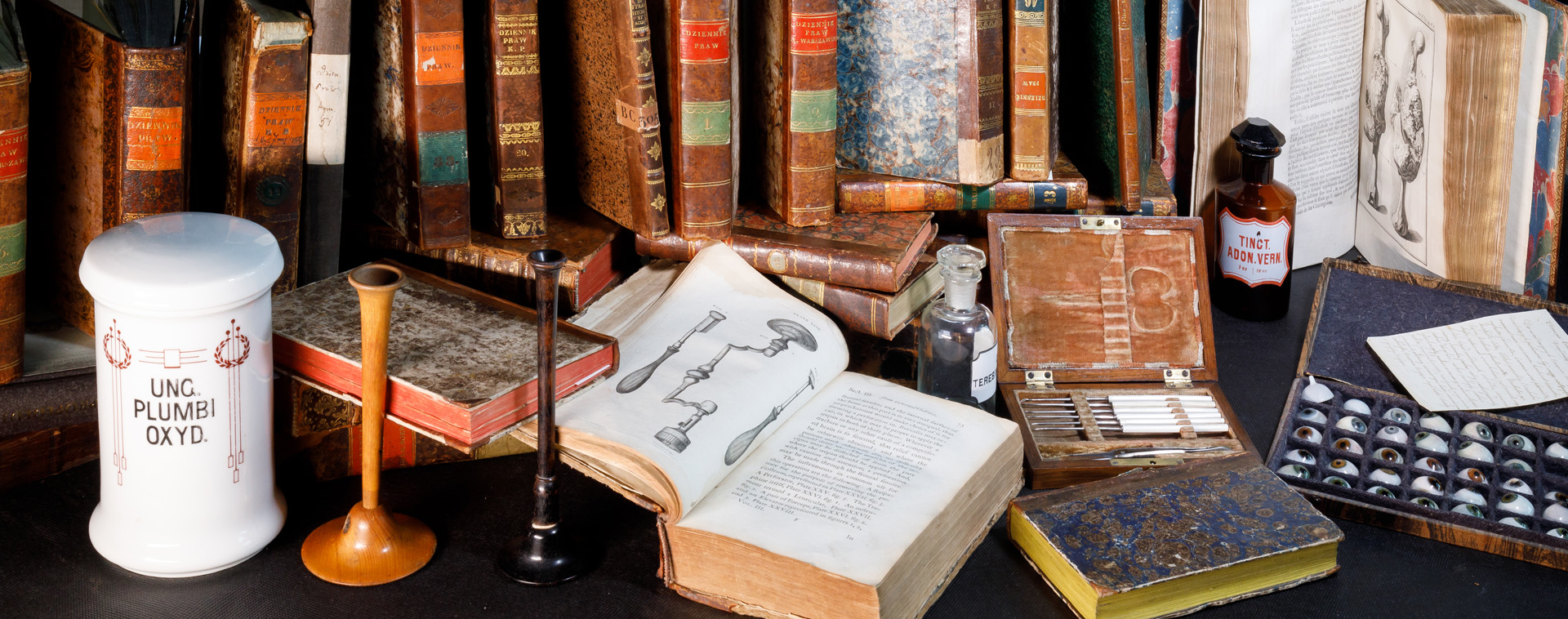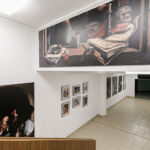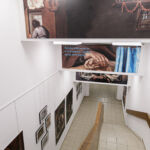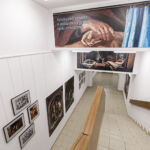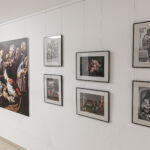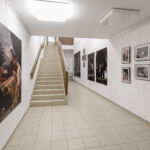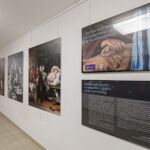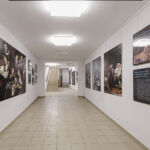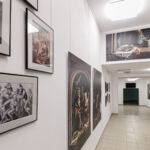Ladies and Gentlemen, we cordially invite you to explore our newly opened exhibition located in the connector between the Rectorate and LIC (Library-Information Centre) buildings. The Museum of the History of Medicine at the Medical University of Warsaw takes great pride in presenting reproductions of paintings and prints, primarily focusing on Dutch and Flemish art from the 17th century. The central theme of the exhibition revolves around the interaction between patient and doctor.
The equating relationship between medicine and art can be traced back to the classical definition of art, first articulated by Aristotle and further developed by St. Thomas Aquinas. According to Aquinas, art is the principle of creating intentional works that aim to compensate for the deficiencies left by nature. He famously stated, “Ars imitatur naturam et suplet defectum naturae in illis inquibus” (“Art imitates nature and compensates for its deficiencies.”). When we reflect upon the most profound deficiency experienced by humans, it becomes evident that it is the lack of health. In a similar vein, medicine also imitates nature, particularly in its fundamental characteristic of intentionality. The art of medicine recognizes the potential to address and remedy specific deficiencies permitted by nature, acting as a reflection of knowledge about the world and a means to restore it. This humanistic purpose is crucial in preventing the scientific dimension from overshadowing the essence of medicine—the patient—and ensuring that medical care does not reduce the human being to a mere case of illness.
The journey towards medicine’s recognition of the laws of nature was fraught with challenges and obstacles. Prior to the 20th century, even less severe illnesses could often result in death or permanent disability. Therefore, it comes as no surprise that the relationship between the sick person and the healer was a prevalent theme in fine arts, sometimes depicted with a touch of humour.
Genre painting gained popularity during the modern era, particularly among Dutch and Flemish artists. They explored various aspects of everyday life and incorporated them into their works. Medicine became a popular subject, with artists portraying doctors engrossed in caring for sick and suffering individuals, as well as condemning the actions of charlatans and ridiculing the gullibility of uneducated patients. These scenes were often set in humble inns, bustling fairs, or the homes of the affluent bourgeoisie.
One recurring subject depicted in these artworks was the examination of the pulse and urinalysis by physicians. Another frequently portrayed motif was doctors being summoned to attend to girls afflicted with lovesickness. Toothaches were often satirized by artists, along with depictions of simple surgical procedures performed by medical practitioners, such as the removal of the “madness stone” from the skull of an insane patient.
